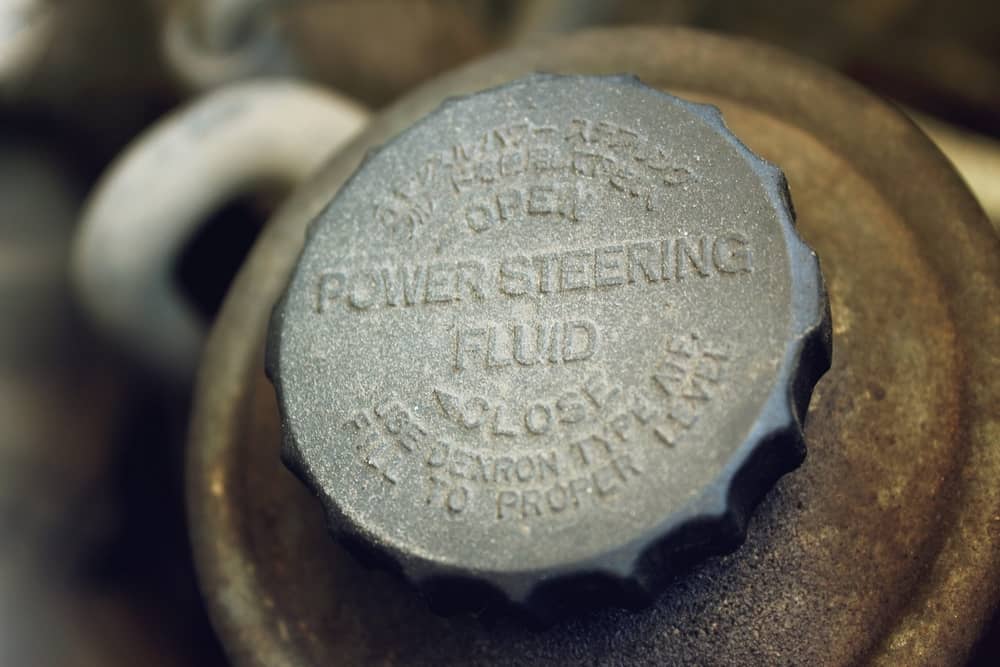More often than not, malfunctioning power steering is an indication the vehicle is an older model with a hydraulic power steering system. That system employs fluid under pressure to lighten the burden of turning the wheel. However, the power steering can go out on newer models as well.
There are generally three possible reasons why your power steering is not working:
Hydraulic vs. Electric Power Steering
Prior to 1951, drivers were required to turn the wheels manually with the entire weight of the vehicle resting on them. This also limited the turning radius of the vehicle—even small ones. Power assist steering was a significant upgrade from manual.
The three components of a hydraulic power steering system are the power steering pump, power steering fluid and hydraulic fluid lines or hoses. When power steering is not working, it is most likely one of these elements that is causing the problem. Unless, of course, your vehicle has electric power steering instead of hydraulic power steering.
Electric power steering has been standard equipment on most automobile models since about 2010. It has no pump, fluid or hoses. It can still malfunction, but it is much more reliable. More on that in a bit.
Signs Your Power Steering Is Not Working
Anytime a vehicle squeaks when starting or wails when the wheel is being turned, that could be an early sign that the power steering is about to go. When power steering is lost, the vehicle may still be maneuvered but with much greater effort, possibly more than some individuals may be able to apply, especially at low speed.
Other indicators that the power steering is failing involve the steering wheel itself. If the wheel is stiff, difficult to turn, heavy or unresponsive, the power steering is most likely the problem. Of course, a red warning light on the dashboard is the most obvious indicator.
Any system that involves the movement of fluid is prone to leaks and contaminants clogging the system. Add a pump and those contaminants can cause clogging that prevents the pump from doing its job of moving fluid through the system. Together, these are the most common reasons for a breakdown in the power steering. The good news is most hydraulic power steering issues are easily fixed.
Power Steering Fluid Loss
The problem with power steering fluid leaks is they look a lot like oil leaks and other kinds of leaks in the vehicle. The power steering pump is bolted to the engine and the power steering hoses run from there to the steering column. As a result, the leak forms in roughly the same spots beneath the vehicle as other leaks.
A variety of fluids are used for power steering and they are not all called power steering fluid. In fact, some old models employ automatic transmission fluid for the power steering because it has similar properties and is efficient from a purchasing and storing standpoint. Consult the owner’s manual to determine what fluid your car or truck uses. It is very important to use the recommended product.
If there is a leak without symptoms, the best way to determine its source is to check the various fluid levels over the course of a week or two and keep track of which one is declining. Most power steering reservoirs will have a dip stick attached to the bottom of the cap. Check the power steering fluid reservoir level every few days using this dip stick and make note of any drop in fluid level.
A total breakdown or detachment of one of the two power steering hoses is easy to diagnose because the hydraulic fluid will leak out rapidly. If that is the case, a hose can be easily detached and replaced for under $50. A three-foot roll of power steering hose costs around $35 at an auto parts store. Make sure the vehicle is off and cooled down, and place something beneath the hose to capture any fluid that may leak out when removed.
More likely, the hoses have succumbed to the ravages of time and are beginning to become brittle and cracked, causing tiny leaks that slowly drain the power steering fluid. As the fluid leaks, the possibility of the power steering pump burning out increases as it works harder and harder to pump the diminishing amount of liquid. Again, hose replacement is the best repair option in this situation.
Another cause of leakage is a cracked rubber seal or gasket. In this case, invest about $12 in a sealant like BlueDevil Power Steering Stop Leak, which is easy to use and repairs seals and gaskets permanently. In fact, a single bottle of Stop Leak can usually fix leaking power steering gaskets in two or three vehicles.
To use the sealant, allow the vehicle to cool down, then pour one third of the bottle into the power steering reservoir. The reservoir is usually marked and easy to find, but if it is hidden, consult the owner’s manual for its location. Fire up the engine and drive the vehicle for an hour or two, allowing the sealant to circulate and bond with the gaskets and seals to fill cracks and pinholes. If the problem is unresolved after a couple of hours or 200 miles, pour another third of the bottle in and repeat the process until the leak ceases.
Once the leak is resolved, add power steering fluid to the reservoir until full.
Failure of the Power Steering Pump
Malfunctions in the power steering pump are often the result of problems with the fluid—either because it is leaking out and forcing the pump to overwork or because it is dirty and clogging the pump. In either case, Stop Leak can resolve the problem. The same process of pouring in one-third of the $12 bottle into the power steering reservoir is involved.
The power steering pump is kept running by belts coming off the crankshaft that turn constantly to give it power. These belts can wear out, crack and fray, causing a slow increase in difficulty turning the wheel. If a belt snaps, the pump stops working and the vehicle immediately loses power steering.
If a belt is the issue, it is relatively easy to repair. After determining which belt is the issue, it can be replaced. A new belt costs about $25. Some pumps run off a single serpentine belt, which is usually about double the cost. Replacing the belt costs between $100 and $400, depending on the time it takes and whether a service station (less expensive) or a dealership (more expensive) is doing the work.
If the pump is beyond repair, it may require replacement. A new power steering pump costs $100-$200. The total cost of replacement at a repair shop runs $500-$700, including labor.
Malfunction in an Electric Power Steering System
Because electric power steering systems have no pump or fluid, the regular causes of hydraulic power steering malfunction don’t apply. Electric power steering employs a motor and computer to assist the driver with turning the wheel. The advantages of this system are twofold:
- It eliminates the pump, which draws power from the engine and saps its horsepower and fuel efficiency.
- It allows for high-tech advances now emerging, like lane control and self-driving vehicles.
Because there are no fluid leaks in an electric power steering system, they are much less likely to require attention. The downside is when the system does fail, it is generally difficult to repair on your own. The most common issue with electric power steering is the onboard command module, and that can only be diagnosed and repaired using a computer. This requires the assistance of a service station or dealership that has made the significant investment in the diagnostic equipment required for this repair.
If the onboard computer is the source of the problem, the repair is likely to be a bit expensive—usually in the $600-$1500 range. Generally, when the computer module fails, the entire power steering unit is switched out.
Occasionally the issue is the motor providing the mechanical steering assistance, or loose connections between the motor and the steering wheel. These may be repaired on a DIY basis for little or no cost. Replacing the motor altogether costs roughly $250 for the part.
Power steering has come a long way since the days of drivers having to manually turn the tires of a car. Keeping your power steering in working condition can help ensure your vehicle remains easy and pleasurable to drive.
BlueDevil Products can be found at AutoZone, Advance Auto Parts, O’Reilly Auto Parts, NAPA, Parts Authority , and other major auto parts retailers.
BlueDevil Products can be found on Amazon.com or at AutoZone, Advance Auto Parts, O’Reilly Auto Parts, NAPA, and other major auto parts retailers.
10 responses to "3 Reasons Your Power Steering Is Not Working"
10 Comments
Leave a Reply
Related Articles
Search Blog
Subscribe
Blog Categories




I can pour a small bottle of fluid in the pump doesn’t help it at all
Cecil-
Unfortunately, the BlueDevil Power Steering Stop Leak would not be intended for a power steering pump leak. Replacing the pump may be your best option.
Thank you!
-BDP
Hydraulic power steering not working.nofluid leak . Tata hexa using
I have learned that if you have pump, fluid but not able to steer its the linkage check your intermediate steering column and linkage.
Had my power steering pump replaced and worked great. Now I’m having the same problem?
Josh-
Are you hearing any whining/grinding noises? Does the power steering fluid seem be reading at the proper level? If the pump was recently replaced, it would be worth bringing the vehicle back to the shop that did the work for further assistance. It’s possible that the system has encountered some air bubbles, especially if you’re hearing a whining noise when turning the wheel. Flushing the power steering fluid and refilling with fresh, clean fluid she correct the problem.
Thank you!
-BDP
I just had a third pump replaced in a week, it was all flushed and we also replaced the reservoir and I noticed it’s running hotter than usual and oul is being pushed back and out of the reservoir. Any suggestions? Im tired of dealing with this issue and I dont go off road
Giovana-
Based on your description, it’s possible that air pockets are causing restricted circulation within the power steering unit. If you have not done so already, you can try bleeding the power steering system to remove the excess air and then refill with fresh power steering fluid. If the problem persists, it may indicate that you have a leak somewhere that is allowing air to continously get into the system. Hope this helps.
Thank you!
-BDP
hi i bought my 307 2007 model.it was standing for a long time while driving all seemed ok then all of a sudden it went stiff,,i tried jacking it up and turning the wheels as told but still a problem can it be a fuse if so where can i look for it and what els can i look at
Barney-
Does the power steering fluid seem low? Based on your description, it may be best to flush the power steering system and refill with fresh, clean fluid. If the fluid was low, it would be a good idea to monitor the fluid level after refilling and check for leaks.
Thank you!
-BDP